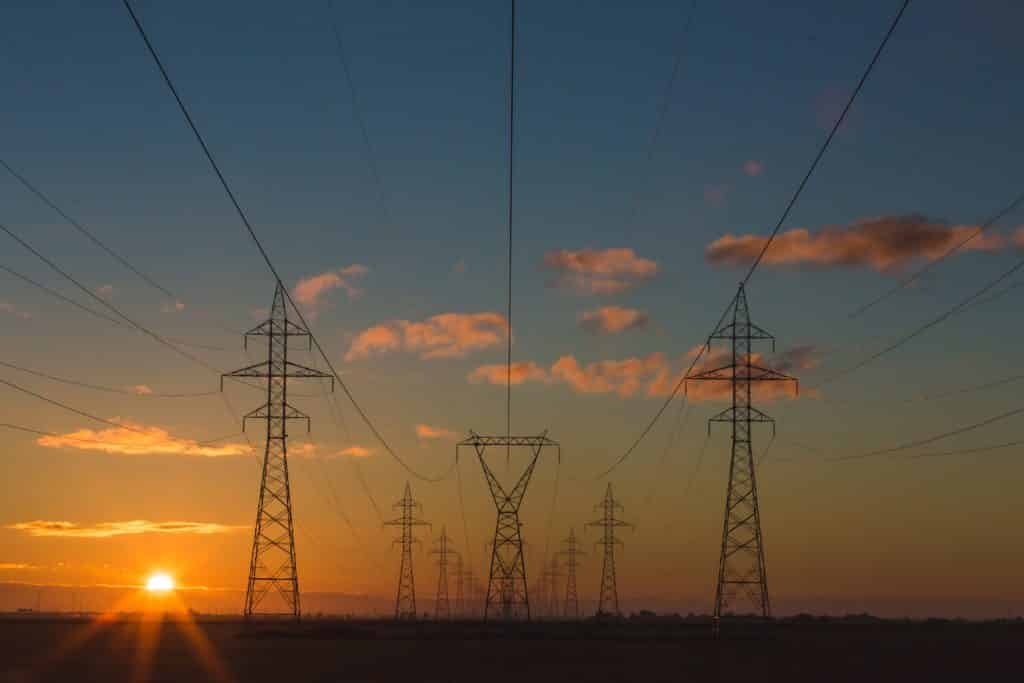You might have noticed huge towers supporting the high voltage transmission lines in your locality. These high voltage lines transmit electric power generated at power stations which are situated at remote locations. Power stations are built away from the cities where natural resources are available and are transmitted to the load centres. Electricity is transmitted at high voltages up to 1.2MV (1200 kilo Volts) in some countries.

Electricity transmitted at high voltages
Electric power transmission network should be efficient, safe and at the same time economical. Keeping this in mind, power is transmitted at high voltage for the following reasons.
- To reduce power losses.
- To reduce power transmission cost.
- To improve the efficiency of power transmission.
Reduction in power loss
Power loss in transmission lines is proportional to the current flowing through it. The transmission lines are normally made of copper, aluminium or its alloys. The resistance of transmission lines itself contribute the most to the power loss. The power loss in the lines due to resistance is called copper loss or I2R loss. Lesser the current lesser will be the power loss. Hence during power transmission, the voltage is stepped up to reduce current. For transmitting the same amount of power to a distance, the power loss will be more while transmitted at a lower voltage.
Sample power loss calculation
Let us calculate power loss when 100kW of power is transmitted to 1 km at different voltage levels. For instance, let us assume that the conductor offers a resistance of 1 ohm to the flow of current.
When transmitted at 1000V,
Current through the conductor = Power / Voltage = 100kW / 1000 V = 100A
Copper loss in the conductor = I2 x R = 1002 x 1 = 10000W = 10kW
When transmitted at 10000V,
Current through the conductor = Power / Voltage = 100kW / 10000 V = 10A
Copper loss in the conductor = I2 x R = 102 x 1 = 100W = 0.1 kW
It can be noted that the power lost at 10000V is much lesser than that at 1000V. Hence for delivering the same amount of power from power station to the load station power loss is much less when it is transmitted at higher voltage.
Reduce voltage drop
Voltage drop in the transmission lines is proportional to the current flowing through it and its resistance to the current flow. Hence reducing stepping up the voltage and reducing current helps in reducing the voltage drop and improving voltage regulation.
Reduce the cost of power transmission
Transmission lines are sized based on the maximum current they must carry. Based on the current area of cross-section of the conductor changes. If an amount of power is transmitted at the lower voltage the size of conductor required is much higher than the same required for power transmission at higher voltages. Hence transmission of power at higher voltages enables a reduction in conductor required for the same. Reduction in conductor facilitates the reduction of conductor cost.
Improve the efficiency of power transmission
We can improve the efficiency of power transmission by reducing the power losses and cost of conductor and equipment required for power transmission. From the above content, power transmission at high voltage can result in a reduction in power loss and conductor cost, hence improve the efficiency of power transmission.
In short, transmission of power at high voltages can help achieving lesser power loss, lesser voltage drops and at the same time improves system efficiency and reduces overall cost of power transmission.
Transformers are used for step up and step down of voltages in a power system. Read more about transformers
thanks for the good and insightful explanation.